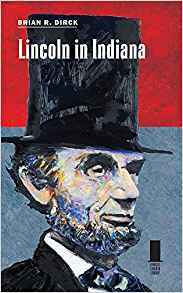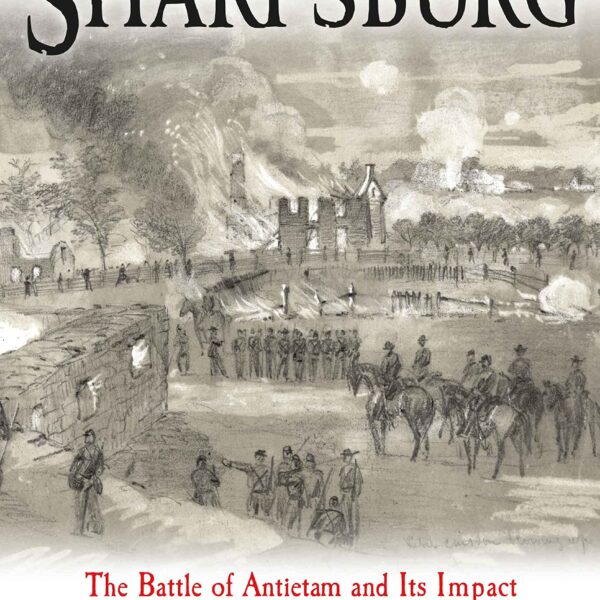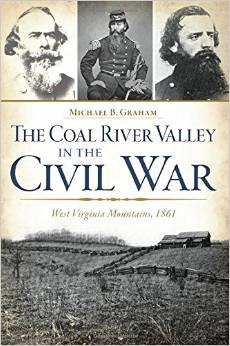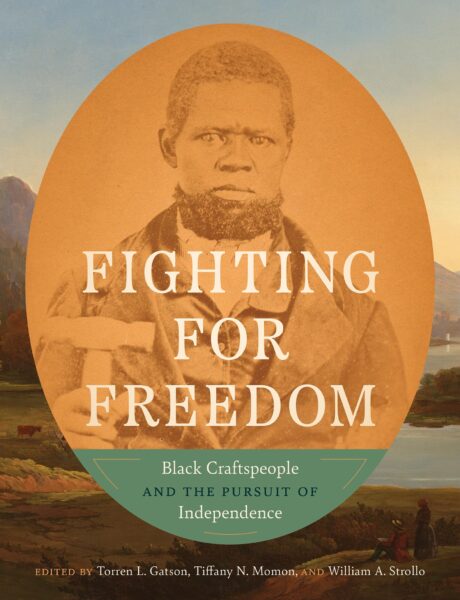Lincoln in Indiana by Brian R. Dirck. Southern Illinois University Press, 2017. Cloth, ISBN: 978-0809335657. $24.95.
 Historians and the general public alike have been fascinated with the life of Abraham Lincoln for decades. Innumerable studies have examined the Lincoln presidency, his pre-Civil War political career, and the sixteenth president’s place in American memory. One of the few subjects not as heavily scrutinized is Lincoln’s early adulthood. In Lincoln in Indiana, historian Brian R. Dirck seeks to remedy this gap in coverage. Using a number of archival, published primary, and secondary sources, Dirck argues that Lincoln’s childhood and adolescence in Indiana was critical to shaping his later character. His period living in Indiana molded how Lincoln “understood kinship, friendship, work and pay, religion and education, parenting and childhood” (3). Dirck organizes the book chronologically, with the first chapter providing a survey of Indiana territorial and early statehood history. Remaining chapters focus on the Lincoln’s family move and establishment of their farm; Abraham’s relationship with his father, mother, and stepmother; and his development—in his teens and early twenties—into someone who wanted to pursue a life different from his father’s.
Historians and the general public alike have been fascinated with the life of Abraham Lincoln for decades. Innumerable studies have examined the Lincoln presidency, his pre-Civil War political career, and the sixteenth president’s place in American memory. One of the few subjects not as heavily scrutinized is Lincoln’s early adulthood. In Lincoln in Indiana, historian Brian R. Dirck seeks to remedy this gap in coverage. Using a number of archival, published primary, and secondary sources, Dirck argues that Lincoln’s childhood and adolescence in Indiana was critical to shaping his later character. His period living in Indiana molded how Lincoln “understood kinship, friendship, work and pay, religion and education, parenting and childhood” (3). Dirck organizes the book chronologically, with the first chapter providing a survey of Indiana territorial and early statehood history. Remaining chapters focus on the Lincoln’s family move and establishment of their farm; Abraham’s relationship with his father, mother, and stepmother; and his development—in his teens and early twenties—into someone who wanted to pursue a life different from his father’s.
Lincoln in Indiana makes an important contribution to Lincoln historiography. Historians such as Harold Holzer and Allen Guelzo have written major works examining Lincoln and the press, Lincoln and emancipation, and Lincoln’s political ideas, to name only a few topics. Lincoln’s antebellum political career has also received attention from Chris DeRose in Congressman Lincoln (2014), which connects Lincoln’s brief stint in Congress in the late 1840s to his eventual election to the presidency. Dirck explains the significance of an even earlier formative period of Lincoln’s life, when he aggressively sought education and upward mobility. The time he spent in Indiana—nearly a quarter of his life—saw him evolve from a child into “a grown man, on the cusp of adulthood and independence” (1).
Dirck stresses the inherent difficulties of writing about Lincoln’s early life. He notes that publically, Lincoln said little about this period, even during his 1860 election campaign. After the president’s assassination, Lincoln’s former law partner, William H. Herndon, conducted interviews with individuals who had known Lincoln in order to write a biography of his deceased friend. The Herndon collection became the primary source of documents on Lincoln’s life in Indiana, and forms the core of the sources Dirck used for his monograph. While this collection has been central for Lincoln biographers since 1865, it is also very problematic. Most of the interviews, as Dirck explains, were completed in the years immediately after Lincoln’s death, decades after the events of the president’s early life. Misremembering, inaccuracies, and a desire among the interviewees to exaggerate both Lincoln’s virtues and their own role in helping to develop those traits hamper the interviews. Additionally, the biases and motivations of Herndon and his interviewers influenced the questions they asked and answers they received. Dirck attempts to mitigate some of these challenges by carefully weighing each document’s accuracy and dependability as a source.
The deficiencies of the Herndon collection and the deficit of documents on Lincoln’s early period requires that Dirck concentrate “more on the people and places surrounding him, rather than Lincoln himself” (3). Dirck brings in other histories to present a fuller picture of the circumstances affecting the young Lincoln. The reader gains a sense of the environment Lincoln emerged from as he built his professional and political life in Illinois. Dirck explains that it was essential to include the history of Indiana to flesh-out the context of Lincoln’s youth. “Far more of him,” the author contends, “came from these Hoosier woods than he perhaps realized” (4). Dirck persuasively shows how Lincoln developed the worldview and determination to succeed within the rough and tumble world of Indiana during its early statehood period. This book, therefore, offers more than just a concise biography of the young Lincoln; it also provides an account of the Hoosier state in the 1810s and early 1820s.
Lincoln in Indiana is a clearly and succinctly argued study of the early years of Abraham with rich descriptions of Indiana. It will certainly appeal to scholars interested in understanding Lincoln’s adolescence and early nineteenth century Indiana history. Its short length makes it ideal for an undergraduate course on Indiana history or Lincoln himself.
John C. Kennedy received his Ph.D. in History from Purdue University.




